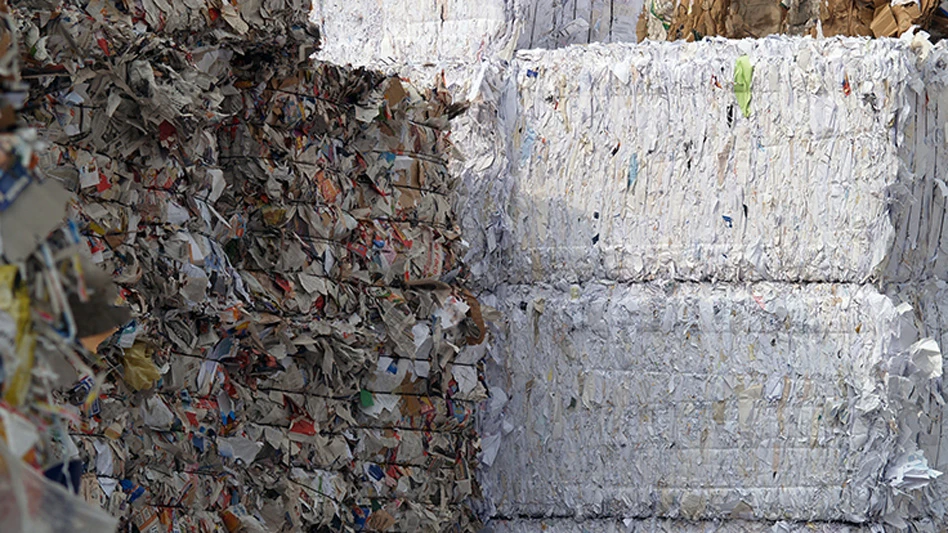
© Luis Seco | Dreamstime.com
Several paper companies reported mill closures or significant downtime in the first quarter of the year as lower demand for packaging reflects in financial results.
In April, ND Paper, the U.S. division of Chinese containerboard producer Nine Dragons Paper (Holdings) Ltd., said it was reevaluating operations at two locations, including its kraft pulp mill in Old Towne, Maine, that produces 73,000 tons of recycled market pulp per year using mostly old corrugated containers (OCC) as primary feedstock—and that was just the first of the moves announced this spring.
Packaging Corp. of America (PCA), International Paper (IP), WestRock Co. and Graphic Packaging International all followed suit with announcements varying from site closures to extended downtime.
“Packaging segment demand was below our expectations for the quarter,” PCA Chair and CEO Mark. W. Kowlzan said during an April earnings call. “Consumer spending continues to be negatively impacted by higher interest rates and persistent inflation, along with consumer buying preferences [skewing] more toward services versus durable and nondurable goods.”
Lake Forest, Illinois-based PCA reported a 25 percent decline in year-over-year net income and a 12.7 percent drop in packaging board shipments from a year ago before announcing May 12 that it plans to idle its mill in Wallula, Washington, until later this year. The facility produces about 1,800 tons of unbleached paper and corrugated medium per day and consumes nearly 1,000 tons of OCC per day.
IP, headquartered in Memphis, Tennessee, took 421,000 tons worth of downtime for economic and not maintenance reasons in the first quarter, down from the 532,000 tons of idled production in the fourth quarter of 2022, but still the third consecutive quarter the company has taken significant economic-related downtime after not taking any during the previous six quarters. IP consumes approximately 5 million tons of recovered fiber annually worldwide, including 1 million tons of OCC and mixed white paper that it processes across its 16 U.S. recycling facilities.
Atlanta-based WestRock, which consumes about 5 million tons of recovered fiber annually, posted what it says was a “solid” second quarter (ended March 31) despite a net loss of $2 billion that included 265,000 tons of economic-related downtime, which it says negatively affected its corrugated packaging segment’s adjusted earnings before interest, taxes, depreciation and amortization, or EBITDA, by $30 million.
WestRock has shut or plans to shut several mills in its network. Most recently, it announced the closure of its North Charleston, South Carolina, containerboard and uncoated kraft paper mill, but in the last year it also has closed a containerboard mill in Panama City, Florida, and corrugated medium operations at its recycled paper mill in St. Paul, Minnesota.
As part of an ongoing mill network optimization strategy, Atlanta-based Graphic Packaging, which consumed 1.4 million tons of recycled fiber last year, said in early May it would close its coated recycled paperboard mill in Tama, Iowa, earlier than previously anticipated.
OCC prices continue to tick up despite somewhat reduced production, though they remain 66 percent lower than the $121-per-ton average seen this time last year, while mixed paper pricing is down 85 percent from a year ago, when the U.S. average price was $68 per ton, according to Fastmarkets RISI’s May 5 issue of Pulp & Paper Week. The lower production volumes have forced up prices of double-lined kraft (DLK) cuttings, with five of seven regions seeing at least $5-per-ton increases as box plant production has slowed.
Globally, the outlook is not much better. In a quarterly recovered paper report from the Brussels-based Bureau of International Recycling (BIR), Francisco Donoso of Spain-based Dolaf Servicios Verdes SL and BIR Paper Division president says demand for OCC is low “all over the world.”
“Fewer goods exports from China and other Asian countries to Europe and the [U.S.] mean packaging production is declining and, therefore, demand and prices for OCC are weaker,” he says. In the U.S. “stocks are quite low across all regions, at paper mills as well as in collectors’ yards, because of low collection volumes in line with the reduction in global demand,” he adds.
Donoso says demand for high grades is even worse than for OCC. “The tissue market is not at all strong and, therefore, demand for raw materials is really low," he says.
His observations ring true in the U.S., too, where sorted office paper (SOP) pricing has been on a steady decline since last fall and, according to the latest pricing index from RISI, SOP pricing saw a $15-per-ton decline across the board, with the lowest prices found in the Pacific Northwest.Latest from Recycling Today
- OnePlanet Solar Recycling closes $7M seed financing round
- AMCS launches AMCS Platform Spring 2025 update
- Cyclic Materials to build rare earth recycling facility in Mesa, Arizona
- Ecobat’s Seculene product earns recognition for flame-retardant properties
- IWS’ newest MRF is part of its broader strategy to modernize waste management infrastructure
- PCA reports profitable Q1
- British Steel mill subject of UK government intervention
- NRC seeks speakers for October event





